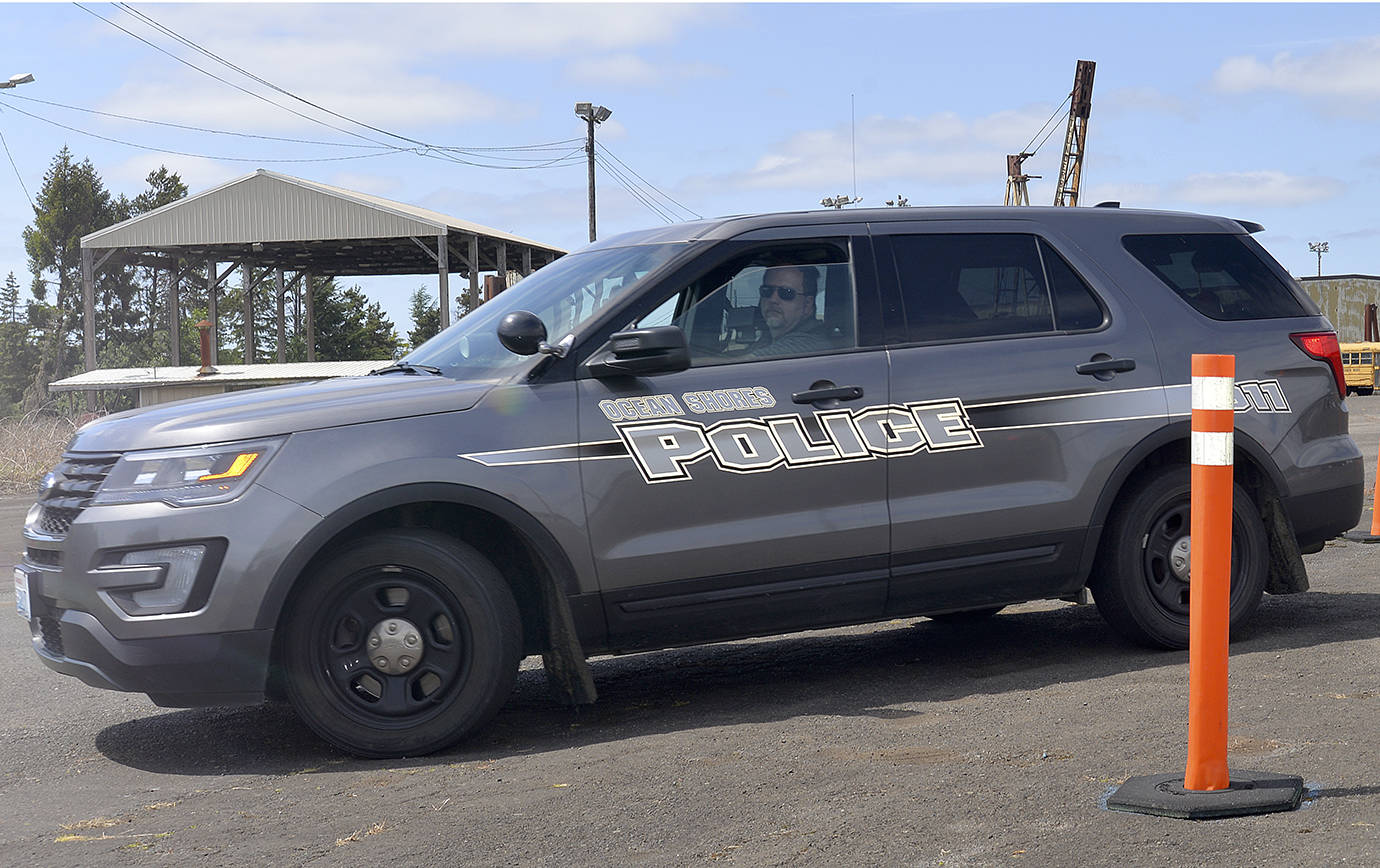Roaring engines, squealing tires, the smell of overworked brakes, flashing lights and blaring sirens were on display last week as police officers from most of the county’s agencies took part in an emergency vehicle training course at the old Weyerhaeuser sorting yard in South Aberdeen.
The training “is to emphasize low-speed skills as well as pursuit driving,” said Hoquiam Police Chief Jeff Myers. The course is taught by Hoquiam Police officer David Peterson and Montesano Police officer Marcus O’Connor, who has taught the county’s course each year since the program started a decade ago.
The class is split into four different courses, each designed to push the limits of the students to the fullest.
“We go through the course a few times nice and easy, then we let ‘em go,” said Peterson, a 10-year veteran and former Cosmopolis reserve officer who has taught the course for eight years. “We follow them to check on their skill set, make sure they are progressing as they should be.”
On this day, a group of about a half dozen officers was split into two, half going with Peterson, half with O’Connor, each working a different portion of the course. Peterson’s group started on the mile-long course that emphasizes decision making under pressure, speed lane changes and controlled braking. It included, for the first time, a roundabout; O’Connor said with the proposed addition of roundabouts throughout the county it was necessary to include one in the course.
The course includes “gates” in the form of traffic cones. Miss a gate and your timed run gets docked five seconds. Hit a cone, same thing.
As the speeds increased, Peterson amped up the pressure. Communicating by radio, he would wait until the last possible second before instructing the driver which of two gates to perform a high speed lane change. By the end of that portion of the course, Peterson was pushing the officers hard, riding their tails to urge them to push their limits.
Elma Police Chief Susan Schultz and Sgt. David McManus from the Ocean Shores Police Department both completed the course in just under two minutes.
The next course was called a skills course. It mimics navigating the types of obstacles one would find in a higher population area. Officers were challenged with navigating tight spaces, including an extremely tight lane with a severe curve that the officers had to back through. Peterson watched them closely, observing their technique and offering advice and encouragement up to the timed run.
“I like to start them off at about 50-60 percent of their ability, and pile on 10 percent more at a time to find out their skill set,” he said.
The next course was an oval, where two officers on opposite ends enjoy a little friendly competition as they go head to head at high speeds. The winner of each heat got to stay in the oval, the losers sat the rest of the races. These officers took it seriously but were clearly having a good time while navigating the tight course at high speeds.
The final course mimicked a high-speed pursuit followed by the deployment of mock spike strips. After a few practice tosses of the strips and some low-speed run-throughs of the course, the officers were instructed to push themselves and to roll with full lights and sirens.
“What we didn’t tell them was, we are going to be right on them with our lights and sirens on,” said O’Connor.
This surprise twist was intended to rattle the officers, and from the results, it did indeed do that. As an officer sped through the course filled with rapid lane changes and steep turns, O’Connor and Peterson in separate vehicles drove within feet of the officer driving, weaving wildly in and out of the course’s set lanes to amp up the pressure. Many gates were missed and cones knocked over during the timed run-throughs. At the end, the officer took the mock spike strips out of their vehicles and were challenged to throw it into a marked area. All the while, the two instructors’ vehicles continued to blast their sirens very close to the driver.
Myers said about 50 officers participated during the week, including the Cosmopolis reserves academy. The only two agencies not represented were the Aberdeen Police Department and Grays Harbor County Sheriff’s Office; they do their training in another location outside the county.
The entire course takes about three hours to complete, with only brief breaks, primarily to let the engines cool down.
The training course is held annually, usually in June, though the date was moved up to May so the Cosmopolis Police reserves academy could participate.


